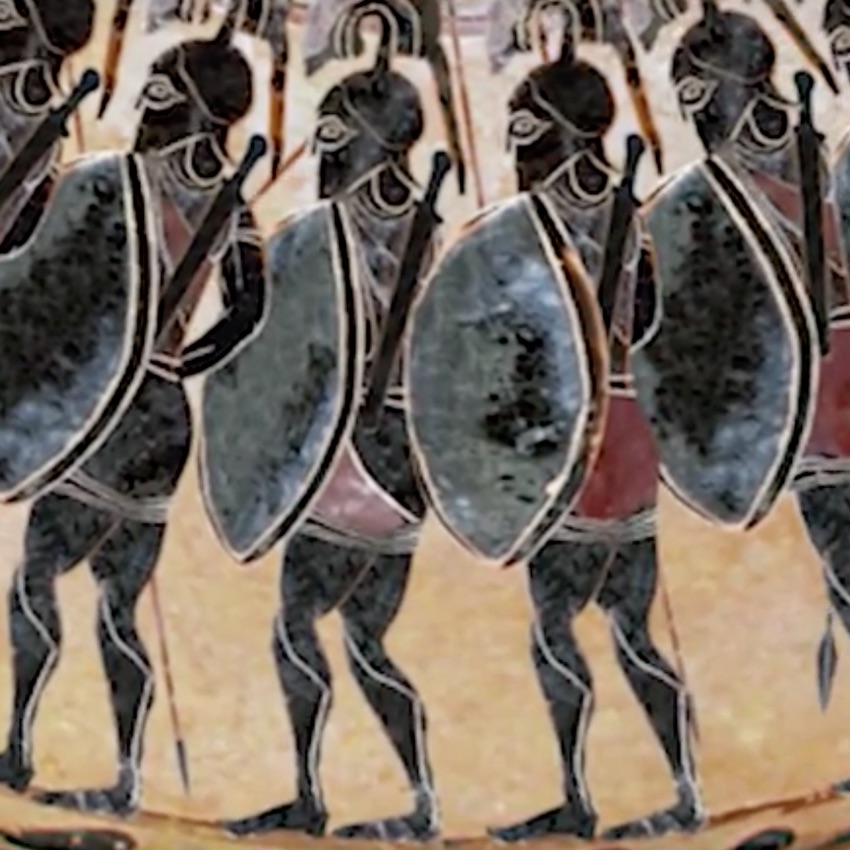I love the figures depicted on ancient Greek vases for the same reason I like their mythology. The stories they tell are rendered simply, but they deal with broad, primal metaphysical narratives that can be applied anywhere.
We like to run video posts by themes and I chose animated Greek vases this week because I’m reading through Edith Hamilton’s Mythology as I prepare to take another stab at the Iliad (third time’s the charm!). I love that these stories are simple enough to explain to any child, but there are layers upon layers and lens upon lens you can use to understand them more fully.
The animations we have to show you today all draw on that idea. Using simple, iconic figures, they are able to adapt these myths to a new medium and tell a story, often without uttering a word. In the one narrated work, the creator was able to ironically juxtapose the heroics of Greek legends with banal, undignified reality in a way that creates very effective pathos. Let’s get started!
Orpheus in the Underworld
Lesley Keen animated one of my favorite Greek myths. In her retelling of we see a few of the key scenes from Orpheus’ descent into Hades to rescue his wife Eurydice (spoiler for a 3,000 year-old story, it doesn’t end happily). Orpheus uses music to transgress into planes he’s not supposed to visit and his story has one of my favorite devices in myth: that the act of looking at someone causes an irreversible, and often tragic change. We can’t embed this video, so please click here or on the image to view it.
Athena Busts Loose
These next two animations are more comical. From the animation workshop:
Animated short created during a BA3 course led by Árpád HERMÁN and László BROVINISZKI in association with the Ancient Greek collection of the Museum of Fine Arts in Budapest. The task was to use the figures of the Ancient Greek vases in a more contemporary, youthful way and create animated shorts.
One can modernize a myth by using it to comment on something modern, but this animator instead chose to present it in the vocabulary of modern cartoons. Both this one and the next have a very “Ren and Stimpy” vibe to them. In the case of Athena bursting out of Zeus’ head, the theme works because of the freakish body horror already present in the story. The animator brings it home by exaggerating a bit.
Árés Memorandum
This animation from the same series is tragicomedy. An aging Hoplite confined to a wheelchair reflects on his glory days while being subjected to the various indignities of his twilight years. Here the iconography is held by the character as an ideal, though it portrays something as cruel and ruthless as he once was. Can you feel pity for an 80 year-old killing machine? Definitely.
Hoplites! Greeks at War
This animation does something else with the theme of aging, elevating it to an aesthetic. I love the grainy look of the characters on the vase and the way they’re confined by it, both in terms of the circular motion they make around the vase and how they have to climb behind defects such as cracks. The ambient music and noises of battle sound like they’re coming from somewhere at the end of a hallway.
This is how I experience such things. History is present when you look at an ancient Greek vase, but it’s abstracted just enough that you’re left with a sense of profound distance from the events it depicts. Scholars today still have many questions about how the battles depicted in ancient Western art actually took place. The only consensus they reached is that one would need a time machine to be certain. Much was lost even though we have depictions of the acts. These vases are wraiths of history, tangential to our experience but never knowable.
That’s all for this week! Be sure to come back here in 7 for another selection of Friday videos!
Bill Rodgers is a writer for cfile.daily.
Do you love or loathe these works of animated ceramic art? Let us know in the comments.


Thank you for this wonderful curation of videos! I enjoyed watching the figures come to life and each artist’s interpretation brought something completely different to the experience. I will never look at an ancient Greek vase in quite the same way.